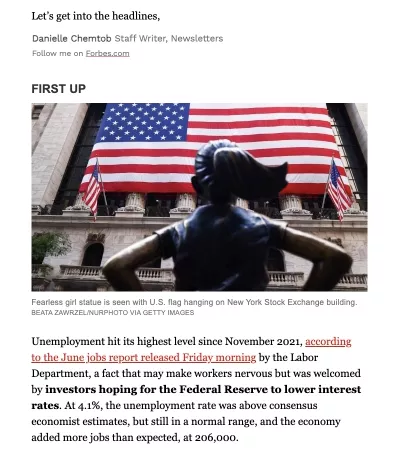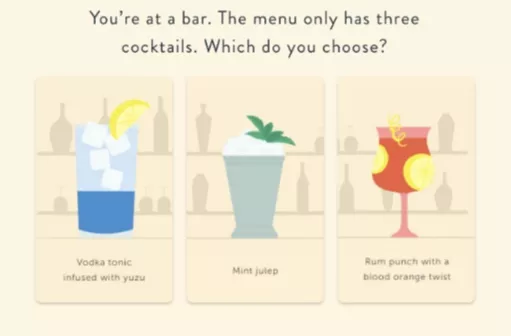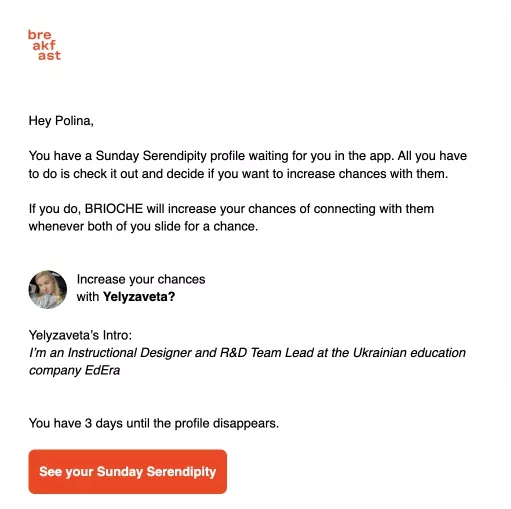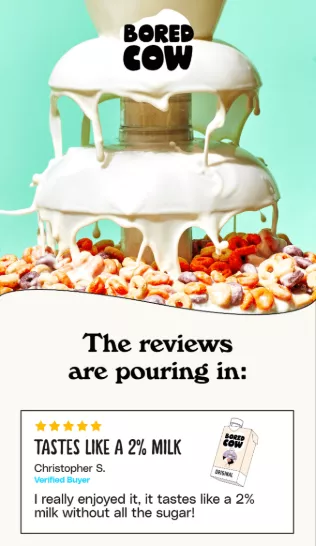Marketing is a combination of tools, each of which is designed to draw attention and interact with the audience. At the same time, communication must satisfy consumer needs and convey the brand’s values.
I will examine technical methods that solve these problems and help you achieve your desired results through email marketing. I will also explain how understanding email user psychology can increase the effectiveness of your newsletters.
This article will be useful for beginners and those already familiar with email marketing.
Psychological barriers and how to overcome them in email marketing
Consumers are constantly bombarded with excessive information. To get your emails read, you need to find the right approach. Below are some examples of typical barriers and how to overcome them.
Information overload
Users are overwhelmed by the amount of information they receive every day. Here are some recommendations that will help your newsletter stand out.
-
Personalization and segmentation. Create content that considers the interests and needs of your subscribers. Track CTR and CTOR metrics to understand how engaging your content actually is.
-
Keep your messages short and clear. Avoid giving too much information. Concise, clear emails that get straight to the point are much more effective.
-
Newsletter frequency. It is important to strike a balance in how often you communicate with your audience. Too many emails lead to disengagement due to information overload. Infrequent newsletters can make your brand less visible. Regularly analyze metrics and adjust your strategy accordingly.
Monitor unsubscribe rates and spam complaints to learn what works and what needs improvement. Use the statistics from your email service to track these indicators.
One effective strategy is to allow subscribers to select the frequency of their newsletter when signing up. For example, Forbes offers a daily or weekly digest of the top news stories.
Here is an example of a daily digest from the American Forbes
Doubt and uncertainty on the path to purchase
Many consumers hesitate before making a purchase, especially when buying online. They may doubt the product’s quality or fear that it will not produce the desired result. This can be overcome by offering the following:
-
Provide guarantees and highlight positive experiences of others. Quality or money-back guarantees reduce the buyer’s risk. Customer reviews and real examples of successful purchases also have a positive effect. It is important that this information be available in your newsletter and on your website.
-
Include reviews and real success stories. They add a sense of reliability and trust. This also includes social media accounts that can be linked to in the newsletter.
Lack of interest in company newsletters
Subscribers lose interest when emails do not meet their expectations or become too predictable. There are several ways to overcome this issue.
Create engaging content
Use interactive elements, gamification, or unexpected offers. This stimulates interest and keeps people engaged with the brand.
The Harry’s brand uses a creative mechanism to promote its products. The letter asks you to identify the shower gel scent that would suit you based on your other preferences.
Enhanced personalization
Use subscriber behavior and preference data to send them relevant content. The better a newsletter matches a recipient’s interests, the greater the likelihood of interaction.
For instance, a dating app uses this type of content to notify users about potential matches.
Interactive newsletters that use AMP content always stand out. This technology enables users to interact with messages without visiting third-party sites.
Lack of trust and fear of spam
People often avoid opening emails out of fear that they might be spam or contain unwanted offers. Recipients are much less likely to read messages from unfamiliar or suspicious senders. Here’s how to overcome that.
Clear sender information
Use a clear and recognizable sender name. Customers should immediately know who is contacting them and feel confident that the email is coming from a trusted source. Additionally, set up domain authentication (e.g., digital signatures) to avoid landing in the spam folder.
Honesty
Don’t try to attract subscribers with clickbait or misleading subject lines. The content of the email should deliver on the promises made in the subject. No one likes feeling deceived.
Using social proof in email copy
Social proof is a powerful tool—people are more likely to trust something that others have already validated. Here are a few ways to incorporate it into your emails:
-
Demand validation. If your product or service is in demand, make sure to mention it! Use phrases like: “Over 100,000 units sold to happy customers” or “Best-selling item in its category.”
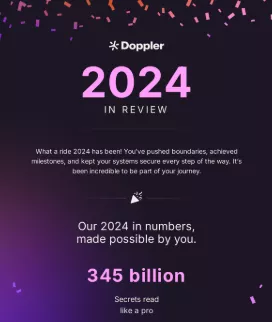
-
Showcasing success stories. Real success stories inspire action and create trust. Share case studies that highlight how your product helped customers achieve results. For example: “How our client increased their profits by 30%”. Such a specific example proves your product delivers real value.
-
Influencer endorsements. When influencers or bloggers use your product, be sure to highlight their reviews. This builds trust and shows potential customers that your product is worth attention.
-
Customer reviews. Many people read user reviews before making a decision. Include short quotes or comments from your customers in your email campaigns to show that your product is trustworthy.
The alternative milk brand Bored Cow also effectively combines customer reviews with a special offer in its email campaign.
The psychology of subject lines
The first thing a recipient sees in their inbox is the subject line. It is often the deciding factor in whether they open the email. Here are some tips to make your subject line more effective.
Showcase value
A subject line that immediately highlights a benefit for the user significantly increases the chances of your email being opened.For example, “Get 20% Off Your Next Order” or “How to Boost Your Productivity” are clear, simple, and easy-to-understand promises. At this stage, the user decides whether they want to learn more.
It is also important to tailor the subject line to the interests and needs of your specific audience. The more precisely it matches their query, the higher the chances the email will be opened.
Numbers in subject lines are another effective tool because they add specificity. For example, “5 Ways to Improve Productivity” or “10 Time Management Hacks” attract attention because people like clear, organized information.
Here is an example of a well-crafted subject line that demonstrates value through a discount and provides clear conditions.
Here is an example of a subject line that clearly conveys the email content and uses a timely hook such as Halloween
Use emotions
Emotional subject lines work best when they align with your subscribers’ expectations and needs. Appealing to their personal feelings and experiences is the key to better engagement.
A subject line like “How to Find Inner Peace in Difficult Times” can catch the attention of those seeking ways to reduce stress.
In autumn, a relevant topic is addressing the need to boost mood and avoid the autumn blues.
At the same time, universal themes that evoke feelings of joy, excitement, or the desire for happiness work just as effectively because these emotions are what most people strive for.
Personalize content
This is an effective way to build an emotional connection with customers. Personalized greetings make letters more relatable to each subscriber. There’s a clear difference between “Get 20% off everything” and “Victoria, here’s your 20% discount as a thank you for your last purchase.” In the second example, the reader feels as if the letter was created just for them, which increases their trust in the brand.
Here’s how you can use personalization in your newsletter subject lines.
Encourage action
A call to action in a subject line can significantly increase conversion rates, especially when emphasizing urgency or benefits. Using words like “today”, “now”, or “only” encourages a quick response.
Always be honest with your audience. If the promises in your subject lines do not match reality, it can lead to losing trust among subscribers. In the long run, this can affect your brand, even if you initially had high open rates.
Make an impact with a unique subject line
How can you make your headline stand out? The first rule is to avoid clichés. Common phrases quickly become boring and lose their effectiveness. Instead, take a creative approach. Humor, wordplay, and playing on popular trends are all effective strategies.
For example, in MOYO’s brand communication: “Surprise, surprise! 😌 Don’t tell anyone, and check back soon!” This creates a sense of intrigue while attracting attention.
Including a real person’s name in the sender’s name is effective. Such newsletters are perceived as more similar to correspondence between friends or colleagues.
Why is it important to test newsletter subject lines?
A/B testing allows you to compare options and select the most effective one.
-
What should you test? Everything from the use of emojis and emotional coloring to the length of the subject line. For example, you can compare a formal, informative subject line with a playful one to see which appeals more to your audience.
-
Select a test group. The group should be large enough to ensure reliable results but small enough that the campaign’s full potential isn’t revealed before its launch.
-
How do you measure success? Before testing, choose a clear priority: the number of opens or conversions. Analyze the results accordingly.
-
Newsletter optimization is an ongoing process. Consumer tastes change, and what is valuable today may not be tomorrow.
How can the time of sending influence the opening rate?
The time of sending is as important as the content because it affects when a person is ready to read it. There are several important recommendations.
Testing
One of the best ways to determine the optimal sending time is A/B testing. Try sending emails at different times and on different days of the week, and then analyze the results.
This will help you determine your audience’s peak activity and its impact on conversion.
Time zones
If your audience is located in different parts of the world, take this into account when planning your newsletter schedule.
Content type
Depending on the type of content, the optimal time for sending newsletters may vary. Newsletters are more relevant on weekdays.
Weekends are better for promotional offers, as subscribers have more time to pay attention.
Audience data
Analytics tools, such as Google Analytics, provide valuable insights into customer behavior.
Determine the best time to send your newsletter by finding out when users visit your site most often and from which devices.
For office workers, it is best to send newsletters in the morning or before the end of the workday.
Holidays and events
Consider national holidays, events, and promotions, and incorporate these newsworthy occasions into your content plan.
Remember the importance of an ethical approach to email marketing and accurate information.
Read a selection of useful articles on email marketing:
Conclusions
-
Keep in mind that psychological factors influence how readers perceive your content:
-
Information overload
-
Uncertainty and hesitation on the path to purchase.
-
Lack of interest in company newsletters.
-
Insufficient trust and fear of spam are also factors.
You can prevent these issues by personalizing and segmenting newsletters, writing short and clear messages, and creating interesting content.
-
Use social experiences in your newsletters. Subscribers will be positively influenced by the following:
-
Confirmation of user demand
-
Demonstrations of success
-
Support from influencers
-
Pay close attention to the subject line — it’s the first point of contact with subscribers, but it could also be the last.
To prevent this, carefully craft the subject line. It should be concise, informative, and attention-grabbing.
-
Conduct testing. Testing is an important part of email marketing because it helps marketers understand their audience and improve the effectiveness of their mailings.
Use this method to determine the conversion theme or content of the email and the optimal time or day to send it.
-
If your newsletter is valuable to subscribers, they will read it. To attract users, your content must meet the following requirements:
-
Targeted delivery based on preferences
-
Clear and concise message content
-
Entertainment value: “Solve the quiz”, “Play the game”, “Find out what suits you”.
-
Reliability of the information provided
-
Positive reinforcement, such as user reviews, product use cases, and influencer support, is also important.
-
Consider the frequency of your newsletters.
Collect data on your subscribers, such as when they are more likely to interact, their time zone, and relevant holidays or seasonal offers.
Related Articles
Segments vs. Audiences in Google Analytics 4: A Comprehensive Setup Guide
You will learn how to correctly set up custom audiences, allowing you to save time and gain insight into your audience
PPC for E-commerce: How to Buy Attention Without Going Broke
Learn how PPC for e-commerce can drive fast sales for your store without draining your budget. Smart strategies, beginner tips, and proven ways to scale profitably.
Personalization 2.0: Breaking the Deadlock of Cold Newsletters
Most leads in managerial positions receive dozens of similar messages every day. Below, I will present the algorithms and techniques that increased our partners' campaign conversion rates from 1% to 11%

